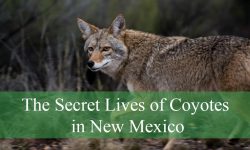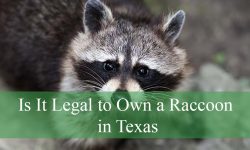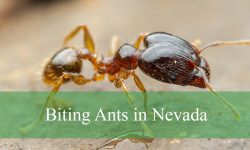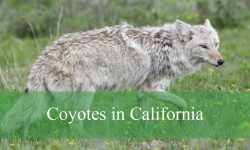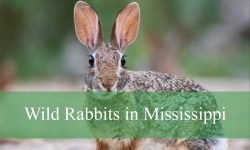Oklahoma, known for its vast plains and rich grasslands, is home to a variety of wildlife, including the iconic prairie dog. These small, burrowing rodents have captured the attention of naturalists and wildlife enthusiasts alike due to their complex social structures and striking behaviors. Understanding prairie dogs in Oklahoma not only offers insight into local ecology but also highlights the importance of their role in maintaining the balance of the prairie ecosystem.
From their distinctive appearance to their elaborate underground colonies, prairie dogs are more than just cute animals scurrying across open fields. Their presence affects the entire ecosystem, influencing plant diversity, predator behavior, and even soil health. For residents and visitors, learning about these fascinating creatures opens a window into the vibrant prairie life of Oklahoma.
Types of Prairie Dogs Found in Oklahoma
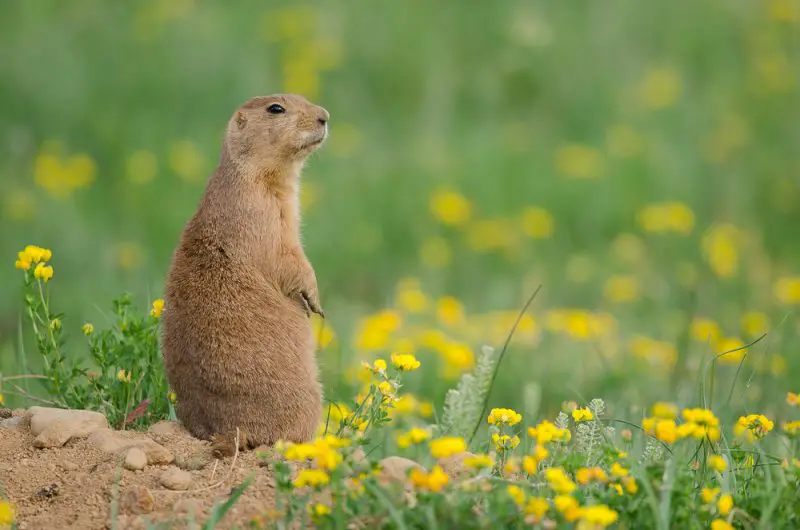
Oklahoma is home primarily to one type of prairie dog, the Black-tailed Prairie Dog (Cynomys ludovicianus). This species is recognized for its black-tipped tail, a feature that differentiates it from other prairie dog species such as the White-tailed, Gunnison’s, or Mexican prairie dogs. The Black-tailed Prairie Dog is highly social and forms large colonies known as “towns,” which can span hundreds of acres in suitable habitats.
The Black-tailed Prairie Dog’s closest relatives include other prairie dog species found in North America. While these relatives inhabit regions in the western United States, the Black-tailed Prairie Dog is the most prominent and ecologically significant in Oklahoma. Their adaptation to grasslands and open plains has made them resilient in the face of environmental changes, although human development and agriculture have fragmented some of their habitats.
Physical Characteristics and Identification
Prairie dogs are small, stocky rodents with a stout body, short legs, and a bushy tail. The Black-tailed Prairie Dog typically measures between 12 to 16 inches in length, with males slightly larger than females. Adult individuals usually weigh between 1.5 to 3 pounds, making them larger than some other rodents but still small enough to navigate their extensive burrow systems efficiently.
Their fur is tan or light brown, providing camouflage among grasses and soil, while their black-tipped tails are a distinctive identifying feature. The head is rounded, with small ears and sharp claws adapted for digging. Prairie dogs’ eyes are positioned high on their heads, allowing them to watch for predators while keeping most of their body hidden. Their strong incisors are used for gnawing on roots and vegetation, contributing to their diet and ecological role.
Behavior and Social Structure
Prairie dogs are renowned for their complex social behavior. They live in highly structured colonies, divided into smaller family units called coteries. A coterie typically consists of a dominant male, several adult females, and their offspring. The social hierarchy within these groups is intricate, with clear roles for defense, foraging, and care of the young.
Communication among prairie dogs is highly developed. They use a range of vocalizations, including barks, chirps, and high-pitched warning calls, to convey information about predators or other threats. Some researchers have even documented variations in calls that indicate the type and size of an approaching predator. Beyond vocal communication, prairie dogs use body language, such as tail flicks and posturing, to interact with one another.
Feeding Habits and Diet
Prairie dogs are primarily herbivorous, feeding on grasses, seeds, roots, and occasional insects. Their diet plays a vital role in shaping prairie ecosystems, as they help maintain grasslands by trimming vegetation and aerating the soil. In Oklahoma, Black-tailed Prairie Dogs feed on native grasses such as bluestem, switchgrass, and buffalo grass, along with various wildflowers and forbs.
They are primarily diurnal feeders, foraging during the day and retreating to their burrows during periods of extreme heat or cold. Prairie dogs have adapted to efficiently digest fibrous plant material and can survive periods of limited water availability by obtaining moisture from their food.
Habitat and Distribution in Oklahoma
Prairie dogs thrive in open grasslands, prairies, and areas with well-drained soils that are easy to dig. In Oklahoma, they are commonly found in the northwestern and western regions of the state, including parts of Cimarron, Texas, and Beaver counties. These areas provide the ideal combination of soil type, vegetation, and low tree density required for prairie dog towns to develop and expand.
Their burrow systems are elaborate and extensive, often featuring multiple entrances, chambers for nesting, and designated areas for waste. These burrows provide protection from predators, harsh weather, and temperature extremes. The soil excavation also benefits other species, as abandoned burrows can be used by burrowing owls, snakes, and other small mammals.
Reproduction and Lifespan
Prairie dogs have a defined breeding season that typically occurs in early spring. After a gestation period of about 30 to 35 days, female prairie dogs give birth to litters averaging three to five pups. The young are born blind and hairless, relying entirely on the mother for the first few weeks of life. By around six weeks of age, the pups begin to emerge from the burrow and learn essential survival skills.
Social cohesion plays a critical role in raising young. Other members of the coterie assist in vigilance and protection, ensuring that vulnerable pups are shielded from predators. Prairie dogs can live up to four to five years in the wild, with survival rates heavily influenced by predation, disease, and habitat conditions.
Predators and Threats
Prairie dogs face numerous threats from natural predators, including coyotes, foxes, badgers, hawks, and snakes. Their alertness, cooperative defense strategies, and extensive burrow systems provide some protection, but predation remains a significant factor affecting population dynamics.
Human activity also poses challenges. Agricultural expansion, urban development, and eradication programs have historically reduced prairie dog populations in some areas of Oklahoma. Additionally, diseases such as sylvatic plague can decimate colonies rapidly, highlighting the need for conservation awareness and protective measures.
Ecological Role and Importance
Prairie dogs are considered a keystone species due to their significant influence on the prairie ecosystem. Their grazing and digging activities help maintain healthy grasslands, prevent shrub encroachment, and improve soil aeration. These changes create habitats for other wildlife, including birds, reptiles, and mammals that rely on open prairie conditions.
Furthermore, prairie dogs serve as prey for numerous predators, sustaining the food web. Their colonies attract species such as burrowing owls, which nest in abandoned burrows, and snakes that hunt within the colony’s boundaries. The health of prairie dog populations often reflects the overall condition of the grassland ecosystem, making them an important indicator species for environmental monitoring.
Fun Facts About Prairie Dogs
Prairie dogs exhibit fascinating behaviors that make them unique among rodents. They engage in “kissing” or touching noses as a form of social greeting and recognition. Their sophisticated vocal communication has been studied extensively, revealing that they can convey detailed information about predator type, size, and speed.
Another intriguing fact is their impact on soil composition. By digging tunnels and relocating soil, prairie dogs enhance water infiltration, nutrient cycling, and aeration, benefiting plant growth. Some ecologists even compare prairie dog towns to natural prairie engineers, whose activities create microhabitats that support biodiversity.
Where to Spot Prairie Dogs in Oklahoma
For wildlife enthusiasts looking to observe prairie dogs in Oklahoma, several regions offer excellent viewing opportunities. The Cimarron National Grassland, located in the northwest corner of the state, hosts large colonies in protected grasslands. Areas near the Oklahoma-Texas-Kansas border, where native prairies are preserved, also provide ideal habitats for prairie dog populations.
When observing these animals, it is essential to maintain a respectful distance to avoid disturbing the colony. Binoculars or zoom lenses can enhance viewing experiences while keeping the animals safe. Visiting during the morning or late afternoon increases the likelihood of seeing active foraging and social interactions.
Conservation and Coexistence
Conservation efforts for prairie dogs in Oklahoma focus on balancing human activity with ecological preservation. Protecting grasslands, monitoring disease outbreaks, and promoting coexistence with agricultural practices are key strategies for sustaining healthy populations. Educating the public about the ecological significance of prairie dogs can help reduce negative perceptions and encourage appreciation of their role in maintaining prairie ecosystems.
Additionally, some programs aim to reintroduce prairie dogs to restored prairie habitats, supporting biodiversity and ecosystem resilience. By recognizing their importance and implementing responsible land management practices, Oklahomans can ensure that prairie dogs continue to thrive alongside human communities.
Summary
Prairie dogs in Oklahoma, primarily the Black-tailed Prairie Dog, are more than just charming rodents; they are vital components of the prairie ecosystem. Their complex social structures, unique communication methods, and ecological impact make them a fascinating subject for wildlife enthusiasts and researchers alike. Understanding their habitat requirements, behavior, diet, and threats is crucial for promoting conservation and coexistence.
From the expansive grasslands of the northwest to the intricate burrows hidden beneath the prairie soil, these animals illustrate the richness and resilience of Oklahoma’s natural heritage. Observing and appreciating prairie dogs not only offers insight into their world but also underscores the interconnectedness of all species within the prairie ecosystem.
FAQs About Prairie Dogs in Oklahoma
What types of prairie dogs are found in Oklahoma?
Oklahoma is home primarily to the Black-tailed Prairie Dog (Cynomys ludovicianus). This species is easily identified by its black-tipped tail and is the most common prairie dog in the state. While other species exist in North America, the Black-tailed Prairie Dog dominates the grasslands of Oklahoma.
How can I identify a Black-tailed Prairie Dog?
Black-tailed Prairie Dogs have tan or light brown fur with a distinctive black tip on their tail. They measure between 12 to 16 inches in length and weigh 1.5 to 3 pounds. Their round heads, small ears, and sharp claws make them excellent diggers, and their high-set eyes help them spot predators while staying mostly hidden.
Where are prairie dogs typically found in Oklahoma?
They prefer open grasslands and prairies with well-drained soils. In Oklahoma, Black-tailed Prairie Dogs are most commonly found in the northwest and western regions, including Cimarron, Texas, and Beaver counties. Their burrow systems can cover large areas, forming what is known as a “prairie dog town.”
What do prairie dogs eat?
Prairie dogs are herbivores. They primarily feed on grasses, seeds, roots, and occasionally wildflowers. Their grazing helps maintain the prairie ecosystem by controlling vegetation and promoting plant diversity.
How do prairie dogs communicate?
Prairie dogs use a combination of vocalizations and body language. Their calls can warn colony members about predators, and some calls can even convey specific details about the type or size of a threat. They also interact through nose touching, tail flicks, and posturing.
What is the social structure of a prairie dog colony?
Prairie dogs live in colonies divided into family units called coteries, usually consisting of one dominant male, several females, and their offspring. These groups cooperate in foraging, defense, and raising young, making prairie dogs one of the most socially organized rodents.
How do prairie dogs reproduce?
The breeding season typically occurs in early spring. After a gestation of 30–35 days, females give birth to 3–5 pups. Young prairie dogs are born blind and hairless and start exploring outside the burrow around six weeks old, learning essential survival skills from the colony.
What predators threaten prairie dogs in Oklahoma?
Prairie dogs face predation from coyotes, foxes, badgers, hawks, and snakes. Their alertness, complex burrows, and cooperative defense strategies help them avoid many predators, but predation remains a significant risk for their populations.
Are prairie dogs important to the ecosystem?
Yes, prairie dogs are considered a keystone species. Their burrowing improves soil quality, promotes plant diversity, and creates habitats for other animals like burrowing owls and snakes. Their presence significantly influences the health and balance of the prairie ecosystem.
Where is the best place to see prairie dogs in Oklahoma?
Wildlife enthusiasts can observe prairie dogs in areas like the Cimarron National Grassland and preserved prairies along the Oklahoma-Texas-Kansas border. Visiting during morning or late afternoon increases chances of seeing active foraging and social behaviors.
Can humans coexist with prairie dogs?
Yes. Coexistence involves respecting their habitat, avoiding unnecessary disturbance, and supporting conservation programs that protect prairie dog colonies. Public education about their ecological role helps reduce negative perceptions and encourages appreciation of these remarkable animals.

